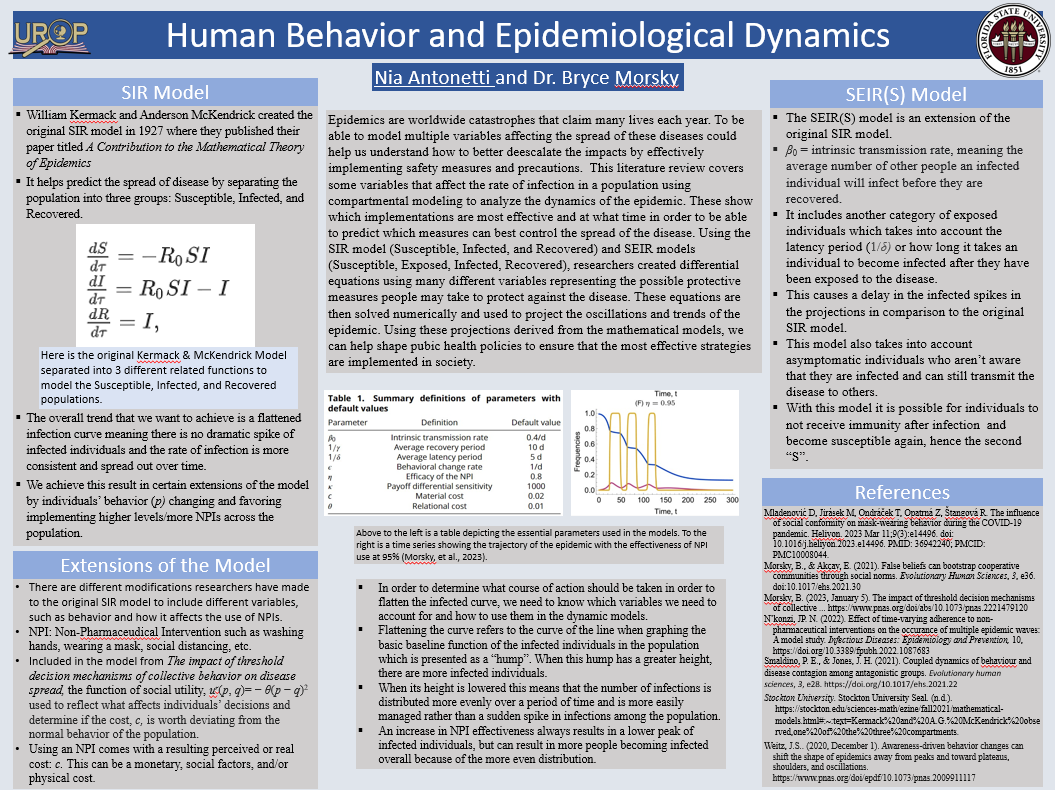Research Symposium
24th annual Undergraduate Research Symposium, April 3, 2024
Nia Antonetti Poster Session 2: 10:45 am - 11:45 am/113

BIO
I am a second-year student at Florida State University from Jacksonville, Florida majoring in Biological Sciences, my aspiration is to attend medical school and become an anesthesiologist. Currently, I am involved in research with my mentor, Dr. Bryce Morsky, conducting a literature review on epidemiological models and how human behavior can influence epidemiological dynamics.
I am eager to continue exploring the world of research as I pursue my academic goals. I am beyond grateful to have the opportunity to work under the guidance of my mentor and to be a part of this program.
Human Behavior and Epidemiological Dynamics
Authors: Nia Antonetti, Bryce MorskyStudent Major: Biological Sciences
Mentor: Bryce Morsky
Mentor's Department: Department of Mathematics Mentor's College: College of Arts and Sciences Co-Presenters:
Abstract
Epidemics are worldwide catastrophes that claim many lives each year. To be able to model multiple variables affecting the spread of these diseases could help us understand how to better deescalate the impacts by effectively implementing safety measures and precautions. This literature review covers some variables that affect the rate of infection in a population using compartmental modeling to analyze the dynamics of the epidemic. These show which implementations are most effective and at what time in order to be able to predict which measures can best control the spread of the disease. Using the SIR model (Susceptible, Infected, and Recovered) and SEIR models (Susceptible, Exposed, Infected, Recovered), researchers created differential equations using many different variables representing the possible protective measures people may take to protect against the disease. These equations are then processed into programs that produce graphs showing the oscillations and trends of the epidemic. These trendlines and where they intersect help predict which protective measures would hypothetically be the most effective and at what “amounts” they would best prevent the spread of the disease. The results of this research could help guide us to the right direction as to how to prevent the spread of many infectious diseases and minimize their impact on the general population.
Keywords: Mathematics, Epidemiology, Epidemics, Mathematical Modeling


